The Panda Molly Fish is a popular hybrid fish known for its distinctive golden coloration. It is a freshwater species that belongs to the Poeciliidae family.
Panda Mollies are not true schooling fish but do prefer to shoal in groups. They are highly adaptable and known for their peaceful nature, making them a great addition to community tanks. We will explore the care, diet, lifespan, and tank setup for Panda Mollies.
We will also discuss their popularity and the reasons why they are loved by fish enthusiasts. So, let’s dive in and learn more about this fascinating fish.
Table of Contents
Introduction To Panda Molly Fish
Discover the exquisite beauty of the Panda Molly Fish, a stunning hybrid species that adds a touch of elegance to any aquarium. Known for their hardiness and peaceful nature, these fish are perfect for both beginner and experienced fish keepers.
Learn more about their care, diet, lifespan, and tank setup at AquaPets Guide.
What Are Panda Molly Fish?
Panda Molly fish, also known as Poecilia sphenops, are a unique and fascinating species of fish that are popular among aquarium enthusiasts. Here are some key features and characteristics of Panda Molly fish:
- They have a distinct color pattern: Panda Molly fish have a striking black and white coloration, resembling a panda bear. The contrast between their dark body and light-colored belly makes them visually appealing in the aquarium.
- They are a peaceful and social fish: Panda Molly fish are known for their calm nature and can be kept in a community aquarium with other peaceful fish species.
- They are livebearers: Like other Molly fish, Pandas are livebearers, meaning they give birth to free-swimming fry instead of laying eggs. This reproductive behavior makes them intriguing to observe and adds excitement to the aquarium environment.
- They are adaptable to varying water conditions: Panda Molly fish are hardy and can adapt to a wide range of water parameters. They can tolerate slightly brackish water and are more resistant to diseases compared to other fish species.
- They exhibit sexual dimorphism: Male Panda Molly fish are smaller in size compared to females. Males have a modified anal fin called a gonopodium, which they use to fertilize the eggs of the female during mating.
Unique Features And Characteristics Of Panda Molly Fish:
- Striking black and white coloration resembling a panda bear
- Peaceful and social nature, suitable for community aquariums
- Livebearing reproductive behavior, giving birth to fry instead of laying eggs
- Hardy and adaptable to various water conditions, including slightly brackish water
- Sexual dimorphism, with males being smaller and having a modified anal fin (gonopodium)
Brief Overview Of Their Natural Habitat And Origin:
Panda Molly fish are native to Mexico and Central America, where they can be found in freshwater bodies such as rivers, streams, and ponds. They are adaptable and can survive in a wide range of environments, including both still and flowing waters.
In the wild, they often inhabit areas with dense vegetation, where they can find shelter and feed on small insects and plant matter. The waters they inhabit are typically warm and have moderate water movement.
Aquarists find them intriguing due to their unique appearance and interesting behaviors, leading to their popularity as pets in home aquariums around the world.
Remember, keeping Panda Molly fish in the right conditions and providing proper care is essential for their health and longevity.
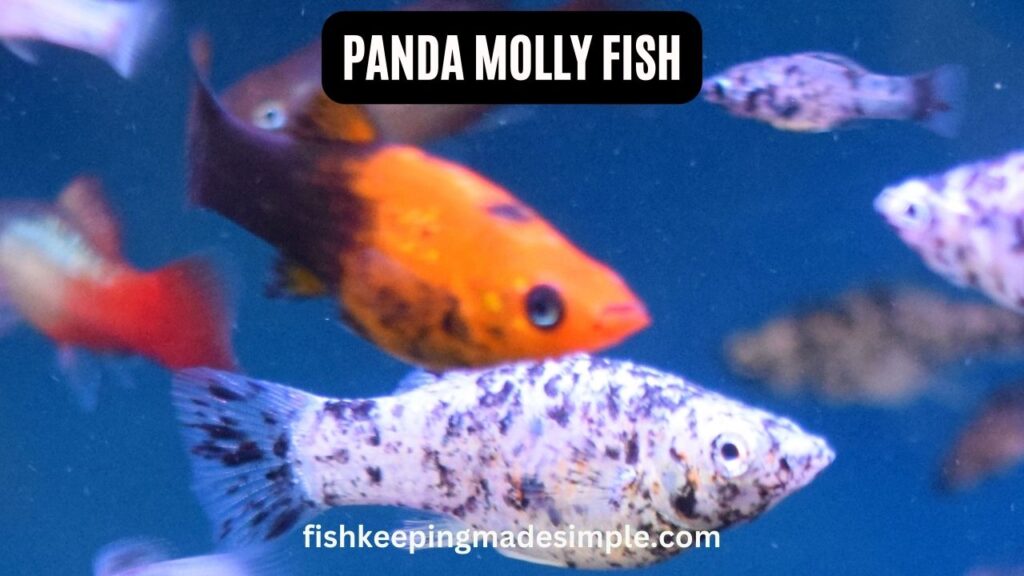
Care And Maintenance Of Panda Molly Fish
The care and maintenance of Panda Molly Fish is essential for their well-being. These unique hybrid fish, popular for their appearance and peaceful nature, require a suitable tank setup, appropriate diet, and regular monitoring of their health. With proper care, they can live for 3-4 years.
Setting Up The Right Tank Environment For Panda Molly Fish:
- Ensure that the tank is properly cycled before introducing the Panda Molly fish.
- Maintain a pH level between 7.5 and 8.5, which is optimal for these fish.
- Keep the water temperature between 72°F and 78°F to provide a comfortable environment for the Panda Molly fish.
- Use a filtration system to keep the water clean and free from harmful toxins.
- Provide sufficient lighting for the tank, as Panda Molly fish appreciate a well-lit aquarium.
Water Parameters And Temperature Requirements:
- PH level: 7.5 – 8.5
- Water temperature: 72°F – 78°F
- Ammonia: 0 ppm
- Nitrites: 0 ppm
- Nitrates: Below 20 ppm
Choosing The Suitable Tank Size For Panda Molly Fish:
- Opt for a tank with a minimum size of 20 gallons to accommodate a small school of Panda Molly fish.
- Consider a larger tank if you plan to keep a larger number of Molly fish or if you want to add other compatible species.
- Provide enough swimming space for the fish by choosing a tank with length rather than height.
Appropriate Tank Decorations And Plants For Panda Molly Fish:
- Use fine substrate like sand or small gravel to mimic their natural habitat.
- Include plants such as Java Fern, Vallisneria, or Anubias to provide hiding spots and cover for the fish.
- Add driftwood or rocks to create additional hiding places and create a more natural-looking environment.
- Avoid sharp or jagged decorations that could injure the fish.
- Ensure that there is enough open space for the Panda Molly fish to swim around comfortably.
By setting up the right tank environment, maintaining suitable water parameters, choosing the appropriate tank size, and providing appropriate decorations and plants, you can create a thriving habitat for your Panda Molly fish.
Feeding And Nutrition For Panda Molly Fish
The feeding and nutrition of Panda Molly Fish is an important aspect of their care. These hybrid fish are popular due to their unique appearance and peaceful nature. It is essential to provide them with a well-balanced diet and a suitable tank setup to ensure their health and well-being.
The Dietary Needs Of Panda Molly Fish:
- Panda Molly fish have specific dietary requirements that need to be met in order for them to thrive.
- Their diet should consist of a variety of foods to ensure they receive all the necessary nutrients.
- A balanced diet is crucial for their overall health and well-being.
Types Of Food Suitable For Panda Molly Fish:
- High-quality flakes or pellets formulated specifically for freshwater fish are a suitable staple food for Panda Molly fish.
- They can also be fed frozen or live foods such as daphnia, brine shrimp, or bloodworms as occasional treats.
- Vegetables such as blanched spinach, lettuce, or zucchini can be offered to provide additional nutrition.
Importance Of A Balanced Diet For Their Overall Health:
- A balanced diet is essential for the overall health and longevity of Panda Molly fish.
- A proper balance of proteins, fats, carbohydrates, vitamins, and minerals will support their growth and immune system.
- Providing a varied diet will prevent nutritional deficiencies and promote optimal health.
Feeding Frequency And Portion Sizes For Panda Molly Fish:
- Panda Molly fish should be fed small amounts of food multiple times a day.
- This can be done by dividing their daily portion into two or three feedings.
- It’s important to avoid overfeeding, as excess food can lead to water quality issues.
- Feed only what the fish can consume within a few minutes to prevent uneaten food from polluting the tank.
Remember to keep a consistent feeding schedule and observe your Panda Molly fish closely to ensure they are eating well and maintaining good health.
Breeding Panda Molly Fish
Breeding panda Molly fish is an exciting endeavor for fish enthusiasts. These unique and eye-catching fish, known for their distinct black and white coloration, require a well-maintained tank and carefully controlled breeding conditions to ensure successful reproduction. With the right care and attention, you can enjoy watching your panda Molly fish thrive and multiply in your aquarium.
Understanding The Breeding Behavior Of Panda Molly Fish
Breeding Panda Molly fish can be an exciting and rewarding experience. To successfully breed these beautiful fish, it’s important to understand their breeding behavior. Here are some key points:
- Panda Molly fish are livebearers, which means that the females give birth to fully-formed fry, rather than laying eggs.
- Male Panda Molly fish are known for their elaborate courtship displays, which involve chasing and flashing their colors to attract the females.
- Once the female is ready to mate, she will allow the male to approach and fertilize her eggs.
- After mating, the female will carry the fertilized eggs inside her body until they are ready to be born as fry.
Breeding Setup And Conditions For Successful Reproduction
Creating the right environment for breeding Panda Molly fish is crucial for successful reproduction. Here are some important factors to consider:
- Provide a spacious aquarium with plenty of hiding places for the female Molly fish to retreat to when she is ready to give birth.
- Maintain a water temperature of around 78-82°F (25-28°C), as this is the ideal range for breeding.
- Ensure the water is clean and well-filtered, with a pH level between 7.0 and 8.0.
- Add live plants to the aquarium, as they provide shelter and encourage the growth of infusoria and other microscopic organisms that serve as first food for the fry.
Caring For The Pregnant Panda Molly Fish And Their Fry
When a female Panda Molly fish becomes pregnant, it’s important to provide proper care to ensure the health of both the mother and the fry. Here are some guidelines to follow:
- Separate the pregnant female from other fish in the aquarium to protect her from stress and potential aggression.
- Feed the pregnant Molly fish a balanced diet consisting of high-quality flake food, supplemented with live or frozen brine shrimp and daphnia.
- Monitor the female closely for signs of distress or complications during pregnancy.
- Once the fry are born, remove the female from the breeding tank to prevent her from eating her own young.
Tips For Raising The Offspring Of Panda Molly Fish
Raising the offspring of Panda Molly fish requires careful attention to their specific needs. Here are some helpful tips:
- Provide a separate tank for the fry, as adult fish may prey on the newborns.
- Ensure the tank is well-maintained and free of any harmful chemicals or contaminants.
- Feed the fry with finely crushed flakes or specialized fry food, as they have delicate mouths and require smaller food particles.
- Perform regular water changes to maintain good water quality for the growing fry.
- As the fry grow, gradually introduce them to larger food particles and eventually transition them to the same diet as adult Molly fish.
By understanding the breeding behavior of Panda Molly fish and providing the right setup and care, you can successfully breed and raise their offspring. Enjoy the journey of witnessing new life and the beauty of these captivating fish.
Tank Mates For Panda Molly Fish
The Panda Molly fish is a popular choice for aquarium enthusiasts. It can be kept with tank mates such as Guppy, Cory catfish, Neon tetra, Tetra, Green swordtail, and Dwarf gourami. This hybrid fish is known for its hardiness and adaptability, making it a great addition to any aquarium.
Compatible Fish Species For A Community Tank With Panda Molly Fish:
- Guppy: Guppies are peaceful and vibrant fish that make great tank mates for Panda Molly fish.
- Cory catfish: Known for their peaceful nature, Cory catfish can coexist harmoniously with Panda Molly fish.
- Neon tetra: These small and colorful fish are peaceful and add a lovely touch to a community tank.
- Tetra: There are various tetra species, such as Cardinal tetra and Glowlight tetra, that can peacefully coexist with Panda Molly fish.
- Green swordtail: Swordtails are known for their peaceful temperament and make great companions for Panda Molly fish.
- Dwarf gourami: These small and colorful fish have a peaceful nature, making them suitable tank mates for Panda Molly fish.
Ideal Tank Mates Based On Their Temperament And Behavior:
- Guppy: Peaceful and active fish. They are known for their vibrant colors and playful behavior.
- Cory catfish: Peaceful bottom-dwelling fish. They are known for their scavenging behavior and can keep the tank clean.
- Neon tetra: Peaceful and schooling fish. They are known for their vibrant colors and create a stunning display when kept in groups.
- Tetra: Peaceful schooling fish. They come in various colors and sizes, adding diversity to the tank.
- Green swordtail: Peaceful and active fish. They are known for their sword-like tails and can be a visually appealing addition to the tank.
- Dwarf gourami: Peaceful and colorful fish. They have unique patterns and are known for their mesmerizing behavior.
Avoiding Aggressive Or Predatory Fish Species With Panda Molly Fish:
- Betta fish: These fish can be aggressive and may nip at the fins of Panda Molly fish.
- Angelfish: Known to be territorial and may become aggressive towards smaller fish like Panda Molly fish.
- Cichlids: Many cichlid species can display territorial and aggressive behavior, making them unsuitable tank mates for Panda Molly fish.
- Barbs: Some barb species are known to be nippy and may harass Panda Molly fish.
- Oscars: These large predatory fish can easily swallow smaller fish like Panda Molly fish.
Creating A Harmonious And Balanced Tank Ecosystem With Panda Molly Fish:
- Maintain proper water parameters: Panda Molly fish thrive in well-maintained water conditions, so regular water testing and appropriate filtration are crucial.
- Provide ample hiding spots: Including plants, caves, and driftwood in the tank will give Panda Molly fish places to retreat and establish territories.
- Offer a balanced diet: Providing a varied diet, including high-quality flake or pellet food supplemented with occasional live or frozen treats, will keep Panda Molly fish healthy and vibrant.
- Regular tank maintenance: Conducting regular water changes and cleaning the tank will help create a clean and healthy environment for Panda Molly fish.
- Keep tank size in mind: Panda Molly fish need ample swimming space, so ensure the tank size is appropriate for their active nature.
- Monitor compatibility: Observing the behavior of tank mates and addressing any aggressive or incompatible behavior promptly will help maintain a peaceful tank environment for Panda Molly fish.
Common Diseases And Health Issues Of Panda Molly Fish
The Panda Molly fish, a popular freshwater species, is known for its hardiness and peaceful nature. They are hybrid fish that have been crossbred, resulting in their distinctive appearance. Panda Mollies require proper care and a suitable tank setup to thrive.
Identifying Common Diseases And Health Problems In Panda Molly Fish:
- Swim Bladder Disease: Swim bladder disease is a common health problem in Panda Molly fish. Symptoms include difficulty swimming, floating on the surface, or sinking to the bottom of the tank.
- Fungus Infections: Fungus infections usually occur due to poor water quality or injuries. Signs of fungus infections include fuzzy patches or cotton-like growth on the body or fins.
- Ich: Ich, also known as white spot disease, is caused by a parasite and appears as small white spots on the fish’s body and fins.
- Fin Rot: Fin rot is a bacterial infection that affects the fins of the fish. It can cause the fins to fray or develop white edges.
- Velvet Disease: Velvet disease is caused by a parasite and appears as a gold or rusty colored dust on the fish’s body.
- Dropsy: Dropsy is a condition where the fish’s body swells, and its scales stick out. This is usually a sign of internal organ failure.
Causes And Prevention Measures For Diseases In Panda Molly Fish:
- Poor Water Quality: Poor water quality is one of the main causes of diseases in Panda Molly fish. Regularly test the water parameters and maintain good water quality.
- Overcrowding: Overcrowding the tank can stress the fish and make them more prone to diseases. Ensure that the tank is properly sized for the number of fish.
- Inadequate Diet: A poor diet can weaken the fish’s immune system and make them more susceptible to diseases. Feed them a balanced diet rich in nutrients.
- Injuries: Injuries can open the way for bacterial or fungal infections. Ensure that the tank decor is fish-friendly and remove any sharp objects that may cause injuries.
Treatment Options For Specific Illnesses Of Panda Molly Fish:
- Swim Bladder Disease: Treat swim bladder disease by adjusting the fish’s diet, avoiding foods that can cause constipation. Provide a balanced diet including vegetables and high-quality pellets.
- Fungus Infections: Treat fungus infections by using aquarium salt or commercially available antifungal medications. Improve water quality to prevent further infections.
- Ich: Treat ich by raising the tank temperature gradually to 86°F (30°C) and adding aquarium salt. Use over-the-counter ich medications if the problem persists.
- Fin Rot: Treat fin rot by improving water quality and using antibiotics specifically designed to treat bacterial infections. Remove any infected tissue if necessary.
- Velvet Disease: Treat velvet disease by raising the tank temperature to 82°F (28°C) and adding aquarium salt. Use commercially available medications to treat the parasite.
- Dropsy: Unfortunately, dropsy is often difficult to treat. However, maintaining good water quality and isolation may improve the fish’s chances of recovery.
Maintaining Good Water Quality And Hygiene To Prevent Diseases:
- Perform Regular Water Changes: Regularly change a portion of the water in the tank to remove toxins and maintain stable water conditions.
- Monitor Water Parameters: Test the water parameters regularly, including temperature, pH, ammonia, nitrite, and nitrate levels. Take appropriate actions to correct any imbalances.
- Practices Good Hygiene: Clean and maintain the tank, including regular cleaning of filters, removing debris, and avoiding overfeeding.
- Quarantine New Fish: Quarantine new fish before introducing them to the main tank to prevent the spread of diseases.
- Avoid Overcrowding: Do not overcrowd the tank and maintain appropriate stocking levels to reduce stress and improve water quality.
Conclusion
The Golden Panda Molly Fish is a beautiful and popular addition to any aquarium. Bred by crossbreeding, this hybrid fish is known for its striking appearance and unique coloration. Like other Mollies, the Golden Panda Molly is a hardy and adaptable species, making it a great choice for beginner fish keepers.
When it comes to caring for the Golden Panda Molly, it is important to provide them with a well-maintained tank that mimics their natural habitat. They prefer a slightly alkaline water pH and thrive in a temperature range of 72-82°F.
It is recommended to keep them in a tank of at least 20 gallons to provide ample swimming space. In terms of tank mates, the Golden Panda Molly is generally peaceful and can coexist with a variety of other fish species.
Good tank mates include Guppies, Cory Catfish, Neon Tetras, and Tetras. With proper care and a suitable environment, the Golden Panda Molly can live for 3-4 years. Their lifespan can be extended with a balanced diet consisting of high-quality flakes, pellets, and occasional live or frozen foods.
The Golden Panda Molly Fish is a stunning and easy-to-care-for fish that would make a colorful addition to any aquarium. Its unique appearance and peaceful nature make it a favorite among fish enthusiasts. So, if you are looking to add some beauty to your tank, consider the Golden Panda Molly Fish as an excellent choice.
Frequently Asked Questions About Panda Molly Fish
Are Panda Molly Fish Suitable For Beginners?
- Yes, Panda Molly fish are suitable for beginners as they are easy to care for and relatively hardy.
- They are peaceful and can adapt well to different water conditions, making them a good choice for novice fishkeepers.
What Is The Average Lifespan Of A Panda Molly Fish?
- The average lifespan of a Panda Molly fish is around 3 to 5 years.
- With proper care and a healthy environment, some individual Panda Molly fish have been known to live up to 7 years or more.
How Can I Tell The Gender Of A Panda Molly Fish?
- The easiest way to determine the gender of a Panda Molly fish is by looking at their anal fins.
- Male Panda Molly fish have a modified anal fin called a gonopodium, which is long and pointed. Females, on the other hand, have a regular rounded anal fin.
- Another way to differentiate them is by observing their body shape, as males tend to be slimmer and more streamlined while females are fuller and rounder.
Can Panda Molly Fish Live With Other Fish In The Same Tank?
- Yes, Panda Molly fish can live with other peaceful fish species in the same tank.
- They are generally compatible with community tank mates such as Guppies, Cory Catfish, Neon Tetras, Tetras, Green Swordtails, and Dwarf Gouramis.
- It’s important to consider the tank size and the compatibility of water parameters when selecting tank mates for Panda Molly fish.
Do Panda Molly Fish Require Any Specific Care Or Maintenance?
- Panda Molly fish require regular care and maintenance to ensure their well-being.
- Here are some key points to consider:
- Provide a suitable tank with plenty of space, ideally a minimum of 10 gallons for a small group of Panda Molly fish.
- Maintain good water quality by regularly testing and monitoring parameters such as temperature, pH, ammonia, nitrite, and nitrate levels.
- Feed them a balanced diet of high-quality flakes or pellets, supplemented with occasional treats like freeze-dried or frozen foods.
- Carry out regular water changes, removing any accumulated waste and debris to keep the tank clean.
- Keep an eye out for signs of illness or stress, and promptly address any issues that arise.
- Provide them with plenty of hiding spots and vegetation in the tank to mimic their natural habitat.
- Observe their behavior regularly and make adjustments to their care as needed.
How Big Does A Gold Panda Molly Get?
A gold panda Molly can grow to a size of about 2 to 4 inches.
What Size Tank Does A Panda Molly Need?
The ideal tank size for a panda molly fish is at least 20 gallons.
How Long Do Gold Panda Mollies Live?
Gold panda mollies typically live for 3-4 years. They are a popular freshwater fish known for their hardiness and adaptability.
Are Panda Mollies Schooling Fish?
Mollies are not schooling fish, but they do like to shoal.
References
Aquarium and Tropical Fish Association (ATA)
National Aquarium Society (NAS)
Ornamental Aquatic Trade Association (OATA)
I am a passionate aquarist with over 30 years of hands-on experience in fishkeeping. My journey began at a young age, collecting fish from the wild and learning through experimentation. Specializing in tropical fish, I bring a deep understanding of the hobby to FishKeepingMadeSimple. The site provides honest, detailed reviews of essential products and accessories to help fellow enthusiasts create the best environments for their fish.

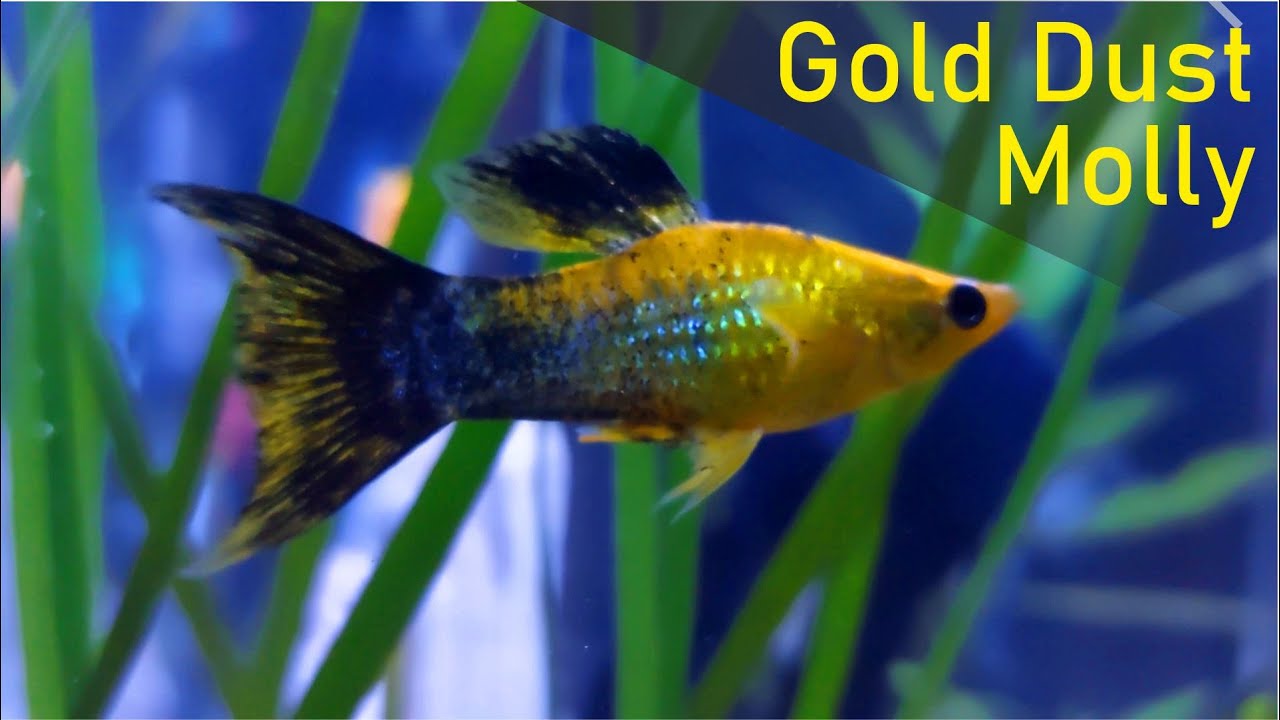
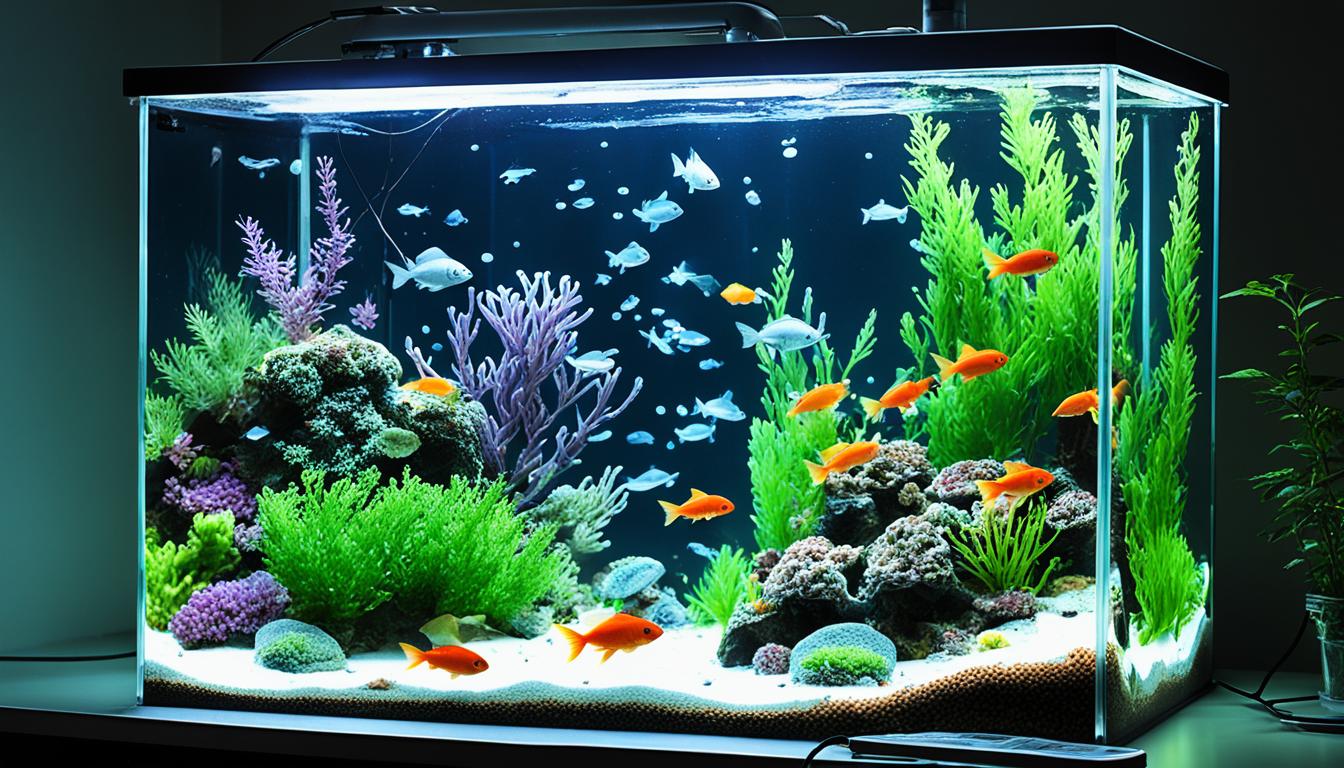
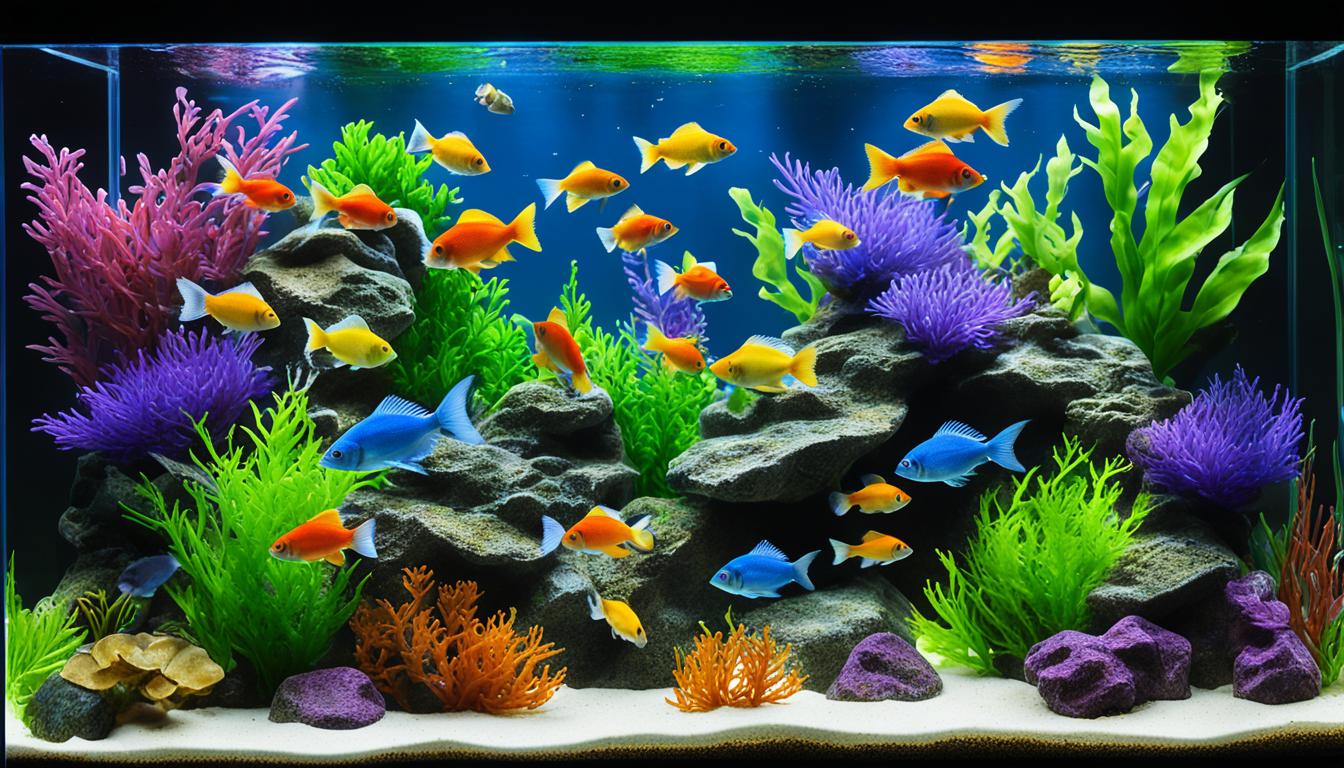






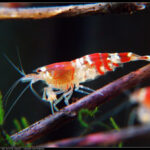

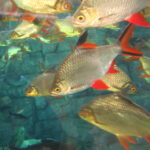
[…] Molly Fish […]